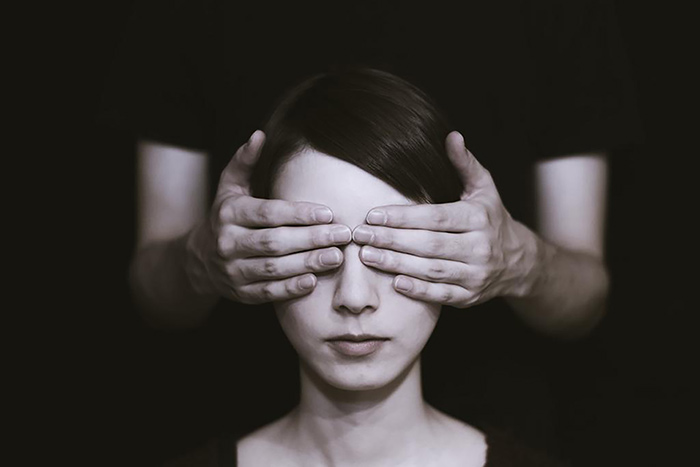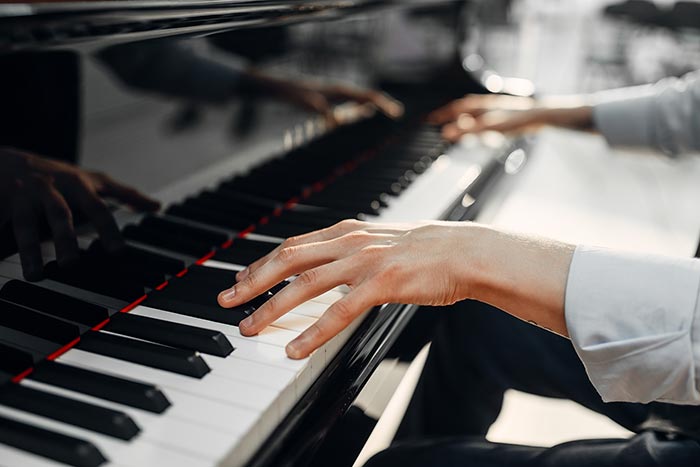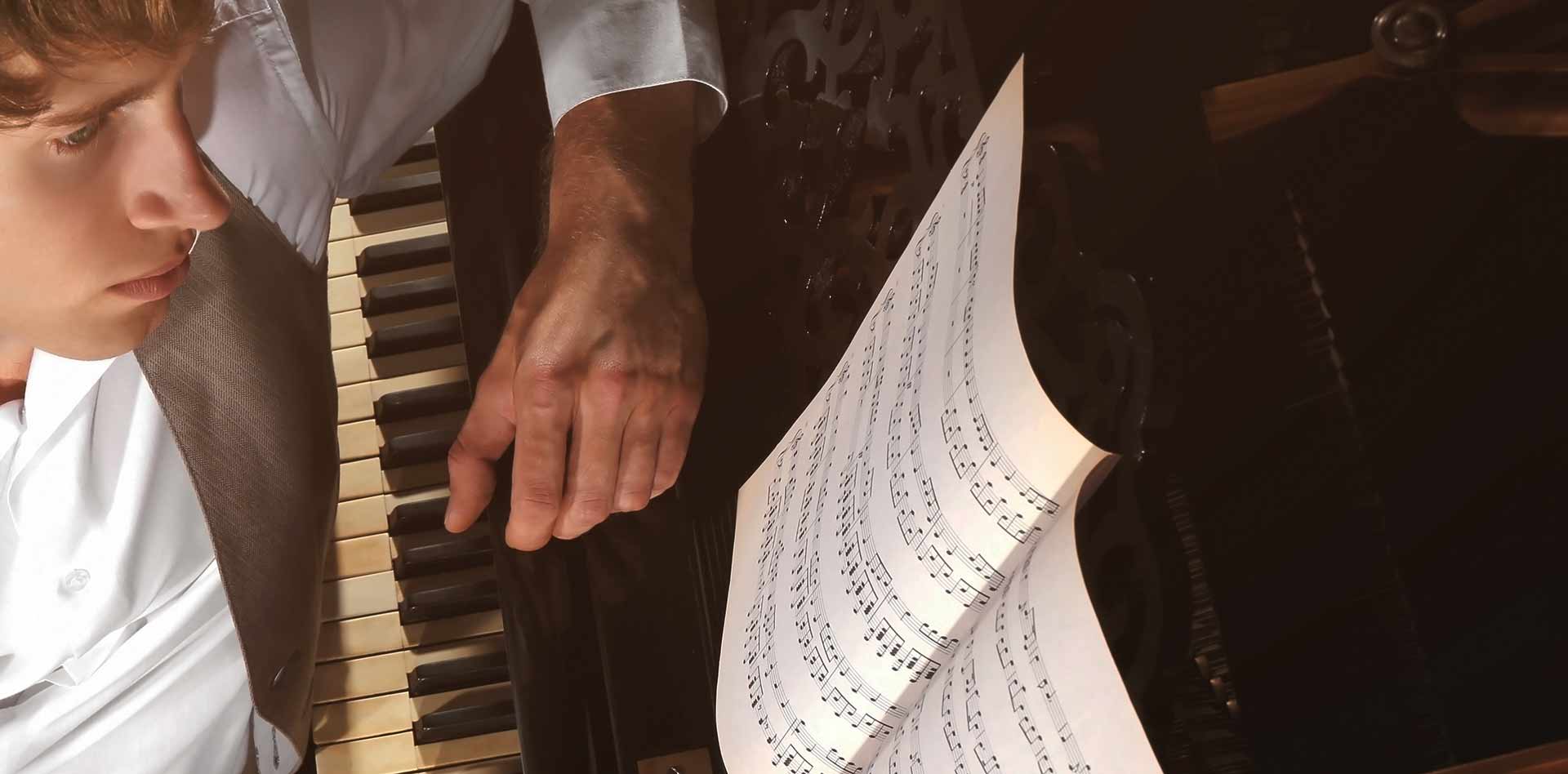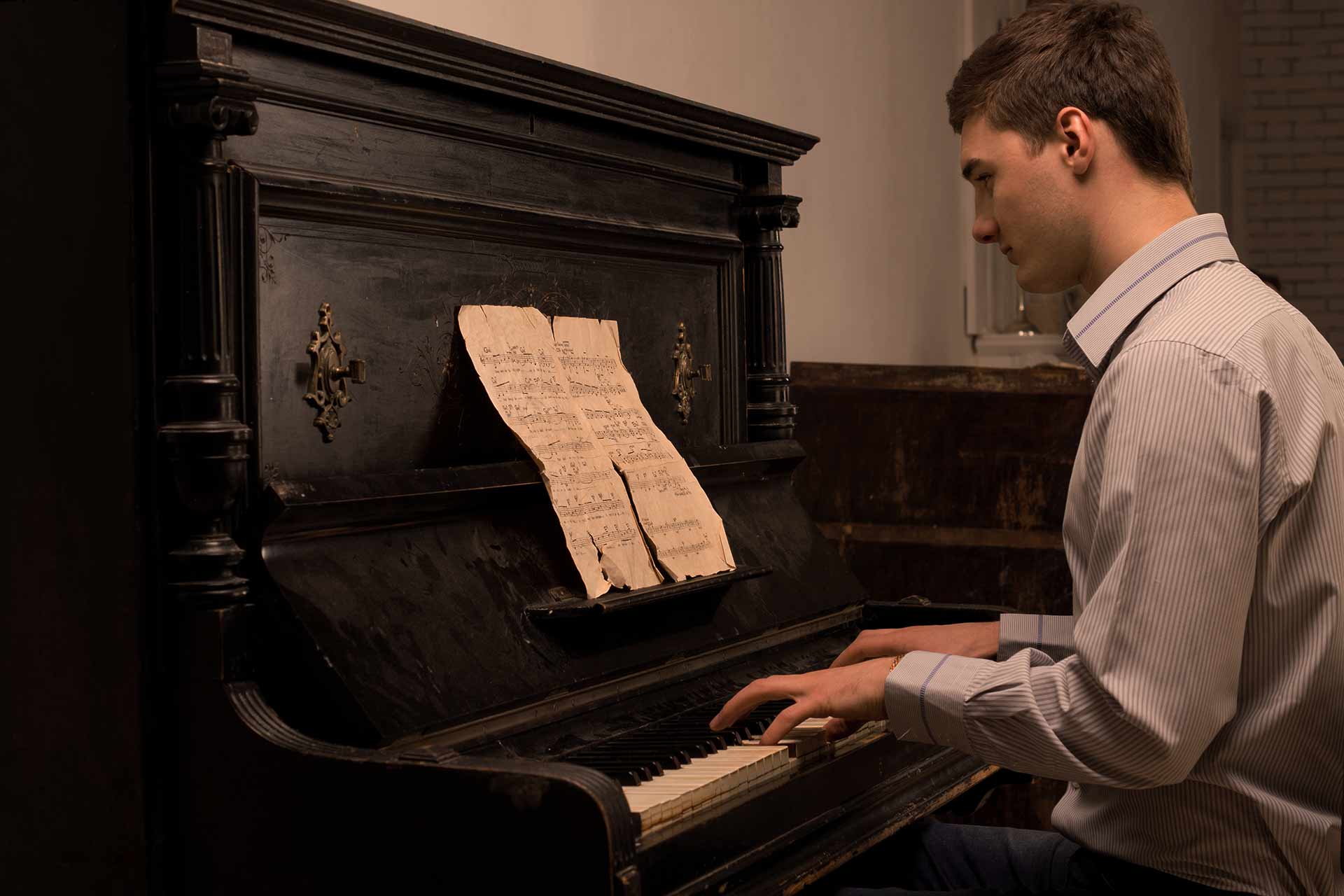“Obtaining a perfect knowledge of the vocabulary used in music is essential if you do not always want to struggle with your piano playing. Reading music is an ESSENTIAL and SERIOUS tool that will help you progress to the next level of your piano playing.”
(Celine-Gaurier Joubert in Note Reading)
“Learning to read music can be one of the best ways to train your brain but it can also have a huge impact on other areas of your life, like confidence and fitness (trust us)” Classical FM 4th of September 2018
If you as an adult endeavour to learn to play an instrument or study music, or if you want to learn to play the piano properly, it is of utmost importance to learn to read a musical score. That means being able to read notes, clefs, keys, time signatures etc. on your piano piece.
If you are studying any orchestral instrument it’s absolutely of vital importance to be able to read music. Having the vision of playing in an orchestra will always include being able to read music.
The reading of notes forms the basis for your studying of piano playing or that matter of any other instrument including the voice.
Being able to read a score or your music piece forms a part of the basics of musicianship.
The Jazz pianist
Even for the jazz pianist that mostly improvises and plays by ear, it is important to be able to read notes. In the jazz genre, a lead sheet is provided with the melody written on stave and chords indicated with it. Being able to read well is naturally expected of a good jazz pianist or jazz player.
Classical music
If you want to study classical music or want to be a good musician you must be able to read notes. To be able to read music is an essential skill. If you speak to any other musician it is expected that you know what is a treble clef, a bass clef, a stave and the notes written as well as the time signature, the key signature being part of the basic theory of music. Therefore this step needs to be given attention to from the start of your training and not be skipped.
Playing by ear vs reading notes
Some people say you do not have to read notes at all, but only need to play by ear.
I absolutely do not agree with this standpoint at all. It depends on the standard of playing or musicianship you want to reach. Many players who never learn the proper way, (the proper way – which includes note reading), often sounds like beginner players unable to reach what they wish to reach.
There are many who advocate that playing by ear only is better, and although there are great advantages in playing by ear, it can not replace the needed ability to read music for any good musician.
“If you ever intend to work with other musicians, whether it is in a choir, orchestra, recording studio, church group or for songwriting purposes it is inevitable that you’ll come across someone that doesn’t play by ear. If one of you only knows how to play by ear and the other only knows how to read sheet music, it’s going to be like speaking two different languages, and you’ll find that working together is quite difficult.”(Musicnotes.com” – Playing by ear. 5 Reasons why reading sheet music is still important”.)
Be a knowledgeable well-trained piano or instrument player
If you want to be a knowledgeable good piano player or instrument player, especially in the classical arena, you need to be able to study the pieces you want or need to learn.
Guitar players
Even for the guitar player reading of notes is essential. Although tablature is often used, reading in the classical arena is still required and very useful in jazz too.
Singers
The same importance of note reading is important for the singer. In some instances, singers are given the tonic solfa (do re mi etc) instead of notes, but for any well trained educated singer, the reading of proper notes are vital. It’s expected of good singers to be able to read the melody from notes on a stave and to be able to sing it without accompaniment.
Being able to read the melody or music, is like reading a line in a book. This reading is called sight-reading.
Sight-reading
The ability to read music without prior study. Reading it on the spot. This reading gives you an edge as a musician and opens the door to easy learning of new music and the enjoyment of exploring and hearing songs you would like to hear or learn.
Sight-reading on the piano is a bit more difficult because you have to read multiple lines of written music for left hand and right hand, while with instruments as the violin or flute etc there is only a single like to read, which makes reading much easier.
Pipe organ
On the Pipe organ, sight-reading is more difficult as one not only has to read left hand and right hand but there is also an added line, called the bassline for the feet pedals.
Basic reading is so important, as it’s like reading A B C in the alphabet. Like reading a normal book.
Can you imagine if you could not read a wonderful book, or articles or read on Google or read the news?
Today most people are educated and can read, not like in past years. It’s much the same with music reading for the musician or pianist.
Just think if you could not read a normal book.
You would be missing so much!
Well, it’s the same with note reading for the musician.
Think if you could just sit down and read and play your favourite songs without having to painfully try to decipher the score or worse than that, not being able to read it at all!
Being able to read music just makes you a better musician. Places you on another level of competency and ability.
There are people who do everything by ear and yes that’s a great gift, but if you are going to be a good musician, you can not skip the step of reading notes.
For the top musician, it’s expected to be educated and learned in the basics of music, note reading, sight-reading and theory.
What is sight-reading?
As already mentioned, it is the ability to play or sing music from reading it from a score without prior studying. To be a good sight-reader takes effort and does not just happen overnight.
It needs to be part of your daily practise to just sit and read a music piece.
It’s very important that you use material that is easy for you at whichever level you are at, else you will lose interest by feeling it’s too difficult and stop your reading.
This way you will miss the joy of hearing or reading music that you have not read before.
So keep it simple at first.
Note reading – a requirement for entering orchestras and music schools
The ability to read notes and to be able to sight-read well for the session player or orchestra player is important.
At all orchestras and most higher music schools, being able to read notes or sightread is an absolute requirement for the assessment of entering new students or orchestra players.
Does not being able to read music affect your style of playing?
Being able to read music does many times affect your way of playing.
Often one finds that the person who does not read or has not studied the proper way, that their playing is often in a flopping of hammering-away style on the keys and it’s obvious to the listeners by hearing and watching them.
Being properly taught helps in a technical way – causing the music to be played in a beautiful way, soundwise and in how it looks while you perform. You will be able to hear and see the discipline of being trained.
Reach heights, but not without reading notes.
Read the scores you always wanted to learn.
If you skip this step of note reading, you will never really be able to reach heights.
It can actually be very difficult to develop as a piano player without this essential step.
It is pertinent that every person that wants to learn music properly needs to read notes. Without it, you will not be able to reach what you want to.
Music is heard by the ear but is written down on score for others to learn.
You might want to learn your favourite jazz song, or a beautiful Chopin or Mozart and the only way to learn it is by reading the score.
Very few can or have the impetus to even attempt to learn these by ear.
Classical music is learnt from the score.
There are millions of melodies, pieces and scores available for the reader, opening doors to play the music you always wanted to play.
It’s written on sheet music.
There is no other way to study it but by reading it.
Like studying as a doctor or as a lawyer, you need to study the books in order to internalise the information needed.
It’s the same with music.
You need to study the score, the notes etc.
Technical problems
Technically you can usually immediately hear if a person has not learnt notes properly.
It’s as though they are not secure in the way they play something.
Some people will play something that they worked out by ear, but there can be stops or breakdowns where the notes have not been properly learnt or fingers are used in an awkward manner, making it technically difficult for the player and thus sounding unsound.
Written down music is a foundation of classical music.
Notation of music started even in ancient times.
Notation has a long history, such as notating on a 4 – line staves and even monks notating sung melodies on an eleven (11) line stave.
Can you imagine how difficult that must have been.
Later years the notation was changed by dividing the 11 lines into two parts.
The 5 lines counting from the bottom up, then erasing the next line (or the middle line – now our middle C) and then the next top 5 lines. ( See “A Brief History of Western Music.”)
From here the 2 stave notation for piano developed. The two staves of 5 lines are joined together at the sides to show that it’s linked.
The top stave being for the treble clef is also called the G clef and is played with the right hand.
Then the bottom stave, also 5 lines with a bass clef or also called the F-clef.
The G-clef or treble clef has a little round notch starting on the G line, therefore, it’s called the G-clef.
This makes it easy to know that the 2nd line, from which the G-clef is drawn, is the G note.
The same with the F-clef. It starts on the F note which is the 4th line from the bottom.
In orchestral scores, there are also other clefs used for instruments that are transposing instruments and needs to be written in another clef so that the whole orchestra plays in one key.
Note reading for the adult
For the adult having to start with this initial step of note reading, it can often feel like timewasting.
If you are reading this article, by now you will realise that that is definitely not the case.
It’s important to be patient and understand how essential this is.
As soon as you have conquered the basic notes, everything will start to become more enjoyable.
Please do not give up in the beginning stages. Your teacher will be able to help you with music that is suitable for adult beginners.
Look for something easy yet not childish, unless of course, you enjoy that.
I do find even some of the children’s books easier than some of the adult books where note reading is pushed too fast and with too much information.
You do not want to lose interest.
Make sure that you enjoy your study book.
It might even be best just to work through all the children’s books at quite a speed, making sure that your foundation is secure and sound.
Children’s books are very simple and the adult should even progress quite speedily through these.
If the fact that it’s children’s books, with beautiful pictures does not work for you, then, by all means, go for the adult books.
Do find yourself a good piano teacher
Do find yourself a good piano teacher to help you forward if you are an adult learning the piano.
A good teacher can quickly see how and what you need to develop.
It also helps millions to have lessons every week so that you are forced to develop literally weekly.
Keep it up and soon you will find that you are well able to read and play simple pieces without too much struggle.
Having to do a new simple piece weekly helps you to develop quickly instead of trying to do one difficult to read piece which can take you months to read and study.
That can come later.
Why note reading is important:
- Every good musician reads music.
- If you really want to progress in your piano studies you need to be able to read music and read it fluently.
- If you want to be able to learn a new piece that you always desired to play you need to be able to read the music.
- It shows that you are educated if you can read.
- It enhances your music abilities.
- The aspect of fun that one can have when a group of musicians comes together to make music.
- It gives you the ability to accompany a friend asking you to accompany her/him. Without being able to read music, this is not possible and the fun element falls away.
So reading notes is absolutely essential.
If you can not read notes it means the following:
- When it comes to studying music you will struggle.
- It will hamper your development.
- It will keep you being a total beginner in your mind and definitely in the minds of others around you.
- You will struggle to learn new pieces.
- You will be uneducated having no idea of the very area you are venturing in called Music.
- You will never fully be able to have self-confidence and pride in your musicianship.
How to start practising to read notes
If you start from the very beginning it helps to use a very simple line with only 2 notes at a time. Learning the note exactly as to where it is on the stave, without having to count the lines or space, but being able to say without a second which note it is. Say for instance you are learning the C and D note:
- Make a mental picture of the position of the note on the stave. Say the note names until its 2nd nature to you.
- Sit in front of your piano and locate the C using your index finger.
- Say it loudly and press the note so as to also try to fix the sound into your ear memory.
- Then you do the D note. Also say and play, say and play.
At the beginning just play the notes with your index finger so that you do not need to think of fingering as well. It helps a lot to practise the saying of the notes away from the piano. So alternate between just saying notes and then do it while saying and pressing the note. This might sound a bit boring, but soon you will recognize the note without thinking, much like a D and A and a D forms the word DAD – in the same way later you will be able to read effortlessly with the new notes learnt.
Weekly lessons
The easiest way to learn notes will, of course, be with the help of a weekly lesson and some guidance from a professional piano teacher. So adult – if you really want to play the piano – book your lessons and keep at it, even when it feels a bit hard at the beginning. Keep going and you will succeed!





